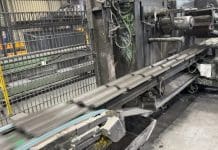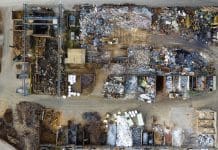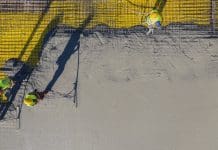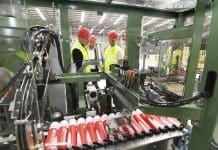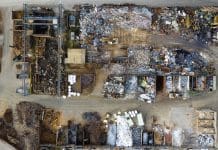The Urban Bio-Loop report from engineering giant Arup argues that organic waste could be turned into useful, valuable construction materials, producing economic, technical and environmental benefits. Lead author Guglielmo Carra explains
It is widely acknowledged that the so-called “business as usual” scenario does not represent a viable option for a sustainable future and different development models must be identified for our society to prosper in the future. The construction industry should reflect the urgency for change – probably more than other sectors. It is still permeated by a number of detrimental practices, such as the use of high impact materials, non-reversible building solutions, and low efficiency processes and manufacturing. It is astonishing to see that the construction sector alone consumes about 60% of the raw materials available in the UK overall and that it generated about 30% of the total waste produced in the EU in 2014.
For these reasons, the development and use of alternative materials to improve the sustainability and the quality of construction materials is central to the current debate. The use of natural materials would trigger a different approach in construction, benefiting from the lower CO2 content of traditional materials, reducing health risks and cost.
Intercepting current low value organic waste streams – both from the countryside and our cities – would reveal organic waste streams as presenting an opportunity rather than a costly problem in both economic and environmental terms.
The principles of the Circular Economy currently provide the rationale for a shift from a linear – disposal – model towards a circular value chain where natural waste is the main resource. In this context, new business models could be identified and developed to enable alternative use of organic waste streams as opposed to the current value chain. This approach could also help supporting local and rural economies with benefits for both existing and new stakeholders.
The recent Arup publication The Urban Bio-loop: Growing, Making and Regenerating aims to demonstrate that a different paradigm for the construction sector is possible. Organic waste from our cities and the countryside, traditionally managed through landfill, incineration and composting, could be diverted – at least in part. It could become a resource for the creation of construction, engineering and architecture products before being fed back in the biological cycle at the end of their service life.
The use of organic construction materials would possibly allow the exploitation of its untapped value, with a positive impact not only from an environmental perspective but also from a technical, social and economic standpoint. In this document, a number of organic waste streams have been identified, together with their applications as products in building construction. Some of them are already certified products used in some markets at global level. Others need further research and investment before being ready for the market.
In the short term, these examples are a guideline for designers and practitioners for replacing some of the traditional architectural products with equivalents made with organic waste as a resource. For the long term, we explored to what extent our cities and urban districts could become self-sustaining – at least partially – from a feedstock point of view. This would be through the active implementation of organic waste streams into the supply chain of building products. This vision envisages on the one side cities and urban districts implementing more effective recovery systems and processes to turn organic waste into a source of value, while on the other side planning for growing natural construction materials. All this could have an impact and contribute to the development of local economies.
The analysis of the current amount of organic waste produced at both European level, and specifically for the city of Milan, demonstrated that a significant feedstock could be available, triggering a significant production of construction products. Considering the case of thin cladding boards for interior, it has been estimated that one kilogram of waste would generate a square metre of final product. Interestingly, the commercial value of one kilogram of organic waste processed for construction purposes would be from five to six times higher in respect to the value realised with current disposal processes – such as energy recovery.
As a consequence of this increase in value, there would be a number of cascade effects, such as additional financial value for companies managing and processing organic waste streams. It would also allow the creation of new enterprises – both start-ups and SMEs – to develop new technologies to implement the use and increase the quality of bio-based products.
The full Urban Bio-Loop report can be found here: https://www.arup.com/publications/research/section/the-urban-bio-loop
Guglielmo Carra is a senior engineer and materials scientist with a strong background in developing new technologies and managing innovation across sectors in the built environment, ranging from construction systems to new materials, automation and robotics. Currently based in Milan, he is Arup´s Europe Leader for Materials Consulting.
Guglielmo Carra
Europe Leader for Materials Consulting
Arup
Tel: +44 (0)20 7636 1531
Twitter: @ArupGroup
Facebook: Arup Group
Instagram: @arupgroup
LinkedIn: Arup




